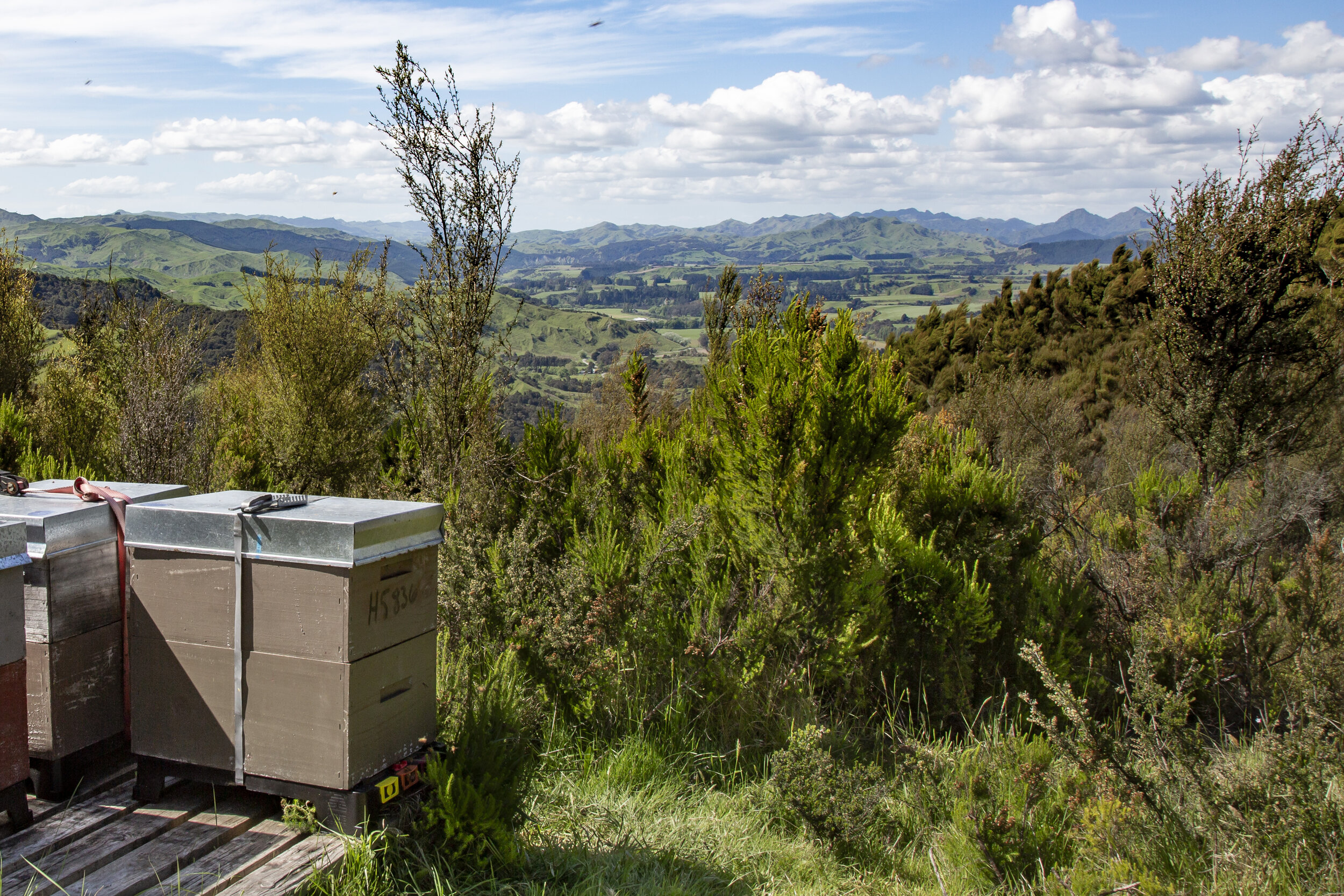Land of hills and honey
Family farms around the region are contributing to Hinakura Honey, a hive of honeymaking activity that makes the most of our native manuka. By Katherine Robinson. Photos by Lucia Zanmonti.
The bees get the best view. Photo: Lucia Zanmonti.
Standing at the top of a ridge overlooking the Hinakura valley beside Nick and Harriet Diederich’s hilltop beehives, you can’t help think the awesome view might be a little lost on the buzzing residents. But according to Harriet, bees are even more complex creatures than we give them credit for: “When there are lots of different flowers in bloom, they will sometimes separate the nectar in the honeycomb, so you’ll see a purple patch in one corner, yellow in another. It’s like a painting.”
Nick and Harriet’s 80 hives of possibly artistic worker bees are among the many that contribute to Hinakura Honey, a local company selling manuka and multifloral honey from some of the district’s family farms.
The idea of combining forces and selling direct to the consumer came about just over a year ago. “Everyone around us had beehives, so we got together and discussed how to make it work as a business. We decided to set it up as a co-op that would buy honey from each farm,” says Harriet.
Harriet was studying business at Massey at the time, and was able to utilise her expertise.
The Diederich’s sheep and beef farm is the operations centre, with a bottling station set up in a converted shipping container. It’s kept as clean and shiny as a laboratory to meet rigorous food safety standards. “Converting a container was the quickest way to get things up to standard. We sourced equipment from as far away as Poland,” says Nick.
Nick looks after the bees, while Harriet focuses on the marketing and distribution, but they work together – sometimes late into the night – when it comes to bottling and labelling.
The honey from each farm is processed and bottled separately, with different coloured labelling and the name of whichever farm it came from, such as Glendhu, Glendryneoch or Aotea.
“We think it’s important every farm keeps its own identity, and it’s interesting that there are subtle taste differences in the honey depending on its source, “ says Harriet. Hinakura Honey is sold either raw, with its large crystals still intact, or beaten to a creamed consistency. “Honey will naturally crystallise over time, but it doesn’t go off unless something has been added to it,” says Harriet.
Numbers on the jars refer to methlglyoxal, the magic ingredient in manuka honey, responsible for its antibacterial, anti-inflammatory effects. The higher the MGO, the higher the percentage and health benefits. Harriet recommends putting lower MGO-numbered honey on your toast, but at MGO 250 and above, she says it’s prized for medicinal qualities and the price will reflect that.
Hinakura Honey is sold throughout the Wairarapa through food stockists, and also further afield at fairs. “We sold our very first jar of Hinakura Honey at Martinborough Fair last February,” says Harriet. You can also buy direct from www.hinakurahoney.co.nz





